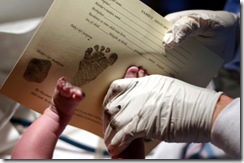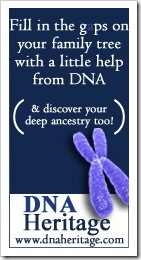On July 8th, Ancestry.com hosted a webinar called “Genetic Genealogy Made Easy.” The webinar is now posted and can be accessed at any time. One great thing about a webinar is that it can be multimedia; indeed, this webinar uses both slides and video.
The presentation is pretty basic, but a good source of information for people who are new to genetic genealogy. The following topics are covered, according to the site:
– DNA testing for genealogy works–in easy terms.
– To understand and apply your results to grow your tree.
– Ancestry.com DNA testing can continue to pay off for years.
– Women can benefit from a paternal lineage test.
– To use Ancestry.com DNA features: Groups, Transfer to Tree, and Ancient Ancestry.
 Last week, Randy Seaver of Genea-Musings
Last week, Randy Seaver of Genea-Musings 
 Terry Barton is co-founder of
Terry Barton is co-founder of  If you’ve ever even thought about testing your own DNA for genealogical purposes, then you are almost guaranteed to have heard of
If you’ve ever even thought about testing your own DNA for genealogical purposes, then you are almost guaranteed to have heard of